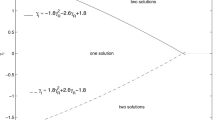Summary
There is a view in the scientific community that a luminiferous ether is not likely to be an ideal inviscid fluid, since the only known mode of wave propagation for such a fluid, the dilatation waves, cannot have the transverse properties exhibited by light. This view is apt to be changed by the findings in this paper, which show that a well-known ideal inviscid fluid can transmit rays with transverse properties. In this paper a ray is defined as a wave propagation phenomenon in a homogeneous and isotropic medium, where a given disturbance propagates without dispersion or change in characteristics along an axis and where all activities associated with the waves diminish rapidly to zero as one moves away from the axis. A characteristic feature of the rays found is a moving helical path on which the fluid velocity is singular and about which the irrotational fluid motion has a constant circulation. The fluid velocity diminishes as one moves away from this path and the velocity has longitudinal and transverse components. The speed of propagation of the rays is equal to that of dilatational waves. Two «companion» rays are found. In one ray the fluid circulation with respect to the direction of propagation and the helical path are both right handed. In the other, both are left handed. The solution for each ray is valid only when the ray is isolated, and the mathematical analysis in this paper deals only with the proof and the description of the two isolated rays. A brief discussion is given about the possible correspondence between the rays and actual physical phenomena. It appears that the infinitely long isolated ray described in this paper cannot correspond with an actual physical phenomenon, since both the angular and the linear momentum per unit length are infinite. It is possible that, when both companion rays are present and when each ray is of finite lenght, then such a solution may correspond to an actual physical phenomenon. However, such solutions involve ray interaction and end conditions that are likely impossible to deal with by exact mathematical means, and they are not dealt with in this paper.
Riassunto
C’è l’opinione nella comunità scientifica che un etere luminifero non sia probabilmente un fluido ideale non viscoso, poiché l’unico modo di propagazione noto per un tale fluido, le onde di dilatazione, non può avere le proprietà trasverse esibite dalla luce. Questa opinione può essere cambiata dai risultati di questo lavoro, che mostrano che un ben noto fluido ideale non viscoso può trasmettere raggi con proprietà trasverse. In questo lavoro un raggio è definito come un fenomeno di propagazione ad onde in un mezzo omogeneo ed isotropo, dove un dato agente di disturbo si propaga senza dispersione o cambiamento nelle caratteristiche lungo un asse e dove tutte le attività associate con le onde diminuiscono rapidamente fino a zero quando ci si sposta dall’asse. Un comportamento caratteristico del raggio trovato è un percorso a spirale in movimento sul quale la velocità del fluido è singolare e intorno al quale il moto irrotazionale del fluido ha una circolazione costante. La velocità del fluido diminuisce quando ci si sposta da questo percorso ed ha componementi longitudinali e trasversi. La velocità di propagazione dei raggi è uguale a quella delle onde di dilatazione. Si sono trovati due raggi «compagni». In un raggio la circolazione del fluido rispetto alla direzione di propagazione ed il percorso a spirale sono entrambi destrorsi. Nell’altro sono entrambi sinistrorsi. La soluzione per ogni raggi è valida solo quando il raggio è isolato e l’analisi matematica, in questo lavoro riguarda solo la prova e la descrizione dei due raggi isolati. Si dà una breve discussione riguardo la possibile corrispondenza
Резюме
Существует точка зрения, что светоносный эфир, вероятно, не является идеальной невязкой жидкостью, так как единственная известная мода распространения волн для такой жидкости, волны расширения, не может обладать поперечными свойствами, которые обнаруживает свет. Однако эта точка зрения возможно будет изменена за счет результатоб, полученных в этой статье, которые показывают, что идеальная невязкая жидкость может пропускать лучи с поперечными свойствами. В этой статье луч определеяется, как явление распространяения волны в однородной и изотропной среде, где заданное возмущение распространяется без дисперсии или изменения характеристик вдоль оси и где любые проявения, связанные с волнами, быстро стремятся к нулю при удалении от оси. Обнаружена характерная особенность лучей, которая представляет собой движушуюся спиральную траекторию, на которой скорость жидкости является сингулярной и относительно которой безвихревое движение жидкости имеет постояннию циркуляцию. Скорость юидкости уменяшается при удалении от этой траектрии и скорость имеет продольную и поперечную компоненты. Скорость распространения луча равна скорости распространения волн расширения. Обнаружены два «сопутствующих» луча. Для одного луча циркуляция жидкости по отношению к направлению распространения и спиральная траектория явяяются правовинтовыми. Для другого луча—левовинтовыми. Решение для каждого луча справедливо только для изолированного луча. Математический анализ в этой статье касается доказательства и описания двух изолированных лучей. Вкратце обсуждается возможное соответствие между лучами и реальными физическими явлениями. Оказывается, что бесконечно длинный изолированный луч, описанный в этой статье, не может соответствовать реальному физическому явлению, так как момент и импульс на единицу длины являются бесконечными. Возможно, когда присутствуют оба сопутствующих луча и когда каждый луч имеет конечную длину, то такое решение может соответствовать реальному физическому явлению. Однако такие решения включают взаимодействие лучей и граничные условия, которые, вероятно, невозможно рассмотреть с помощью точных математических методов, и эти решения не рассматрирались в этой работе.
Similar content being viewed by others
References
J. W. S. Rayleigh:Theory of Sound, 2nd edition (New York, N. Y., 1894–96).
H. Lamb:Dynamical Theory of Sound, 2nd edition (Arnold, 1925).
Author information
Authors and Affiliations
Additional information
To speed up publication, the author of this paper has agreed to not receive the proofs for correction.
Traduzione a cura della Redazione.
Переведено редакцией.
Rights and permissions
About this article
Cite this article
Rongved, L. Ray propagation in an inviscid fluid. Nuov Cim B 80, 109–120 (1984). https://doi.org/10.1007/BF02899376
Received:
Revised:
Published:
Issue Date:
DOI: https://doi.org/10.1007/BF02899376



